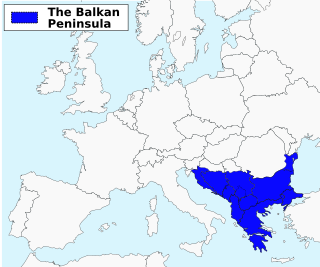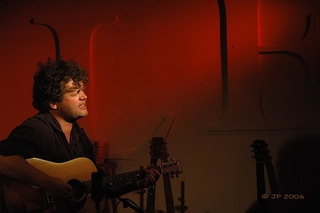
"Wilhelmus van Nassouwe", usually known just as "Wilhelmus", is the national anthem of the Netherlands. It dates back to at least 1572, making it the oldest national anthem in use today, provided that the latter is defined as consisting of both a melody and lyrics. Although "Wilhelmus" was not recognized as the official national anthem until 1932, it has always been popular with parts of the Dutch population and resurfaced on several occasions in the course of Dutch history before gaining its present status. It was also the anthem of the Netherlands Antilles from 1954 to 1964.

Syldavia is a fictional country in The Adventures of Tintin, the comics series by Belgian cartoonist Hergé. It is located in the Balkans and has a rivalry with the fictional neighbouring country of Borduria. Syldavia is depicted in King Ottokar's Sceptre (1938–1939), Destination Moon (1950), Explorers on the Moon, The Calculus Affair (1954–1956), and Tintin and the Lake of Sharks (1972), and is mentioned in Tintin and the Picaros (1975–1976).

Belgian French is the variety of French spoken mainly among the French Community of Belgium, alongside related Oïl languages of the region such as Walloon, Picard, Champenois and Lorrain (Gaumais). The French language spoken in Belgium differs very little from that of France or Switzerland. It is characterized by the use of some terms that are considered archaic in France, as well as loanwords from languages such as Walloon, Picard and Dutch.

The Flemish Region, usually simply referred to as Flanders, is one of the three regions of Belgium—alongside the Walloon Region and the Brussels-Capital Region. It occupies the northern part of Belgium and covers an area of 13,625 km2 (5,261 sq mi). It is one of the most densely populated regions of Europe with around 490/km2 (1,300/sq mi).

The Flemish Community is one of the three institutional communities of Belgium, established by the Belgian constitution and having legal responsibilities only within the precise geographical boundaries of the Dutch-language area and of the bilingual area of Brussels-Capital. Unlike in the French Community of Belgium, the competences of the Flemish Community have been unified with those of the Flemish Region and are exercised by one directly elected Flemish Parliament based in Brussels.

Belgians are people identified with the Kingdom of Belgium, a federal state in Western Europe. As Belgium is a multinational state, this connection may be residential, legal, historical, or cultural rather than ethnic. The majority of Belgians, however, belong to two distinct ethnic groups or communities native to the country, i.e. its historical regions: Flemings in Flanders, who speak Dutch, and Walloons in Wallonia, who speak French or Walloon. There is also a substantial Belgian diaspora, which has settled primarily in the United States, Canada, France, and the Netherlands.

Brabantian or Brabantish, also Brabantic or Brabantine, is a dialect group of the Dutch language. It is named after the historical Duchy of Brabant, which corresponded mainly to the Dutch province of North Brabant, the Belgian provinces of Antwerp and Flemish Brabant as well as the Brussels-Capital Region and the province of Walloon Brabant. Brabantian expands into small parts in the west of Limburg, and its strong influence on the Flemish dialects in East Flanders weakens toward the west. In a small area in the northwest of North Brabant (Willemstad), Hollandic is spoken. Conventionally, the South Guelderish dialects are distinguished from Brabantian but for no objective reason other than geography.
The T(ea)-rules, are a set of conjugation rules used in the Dutch language to determine whether the second person singular/plural and the first and third person singular of a verb end in -t or not. These rules are related to the 't kofschip-rule, which is used to determine the verb end for past tenses and participles. The combined sets of rules are also known as the d/t-rules.
Syldavian is a fictional West Germanic language created by Hergé as the national language of Syldavia, a fictional Balkan kingdom that serves as a major setting in many of The Adventures of Tintin stories. Hergé modeled the language on Marols, a dialect of Dutch spoken in and around Brussels. The entire corpus of the language has been analyzed by Mark Rosenfelder.

The Kingdom of Belgium has three official languages: Dutch, French, and German. A number of non-official, minority languages and dialects are spoken as well.

The Marolles or Marollen is a popular historic neighbourhood of Brussels, situated between the Palace of Justice and Brussels-South railway station. Lying at the heart of Marolles are the Chapel Church and the Place du Jeu de Balle/Vossenplein. Major arteries of the district include Rue Haute/Hoogstraat, Rue Blaes/Blaesstraat and Rue des Tanneurs/Huidevetterstraat. Its inhabitants are called Marolliens. The dialect known as Marols (marollien) was spoken in this area until the 20th century.
Dutch dialects are primarily the dialects that are both cognate with the Dutch language and are spoken in the same language area as the Dutch standard language. Dutch dialects are remarkably diverse and are found in the Netherlands and northern Belgium.

Dutch(Nederlands ) is a West Germanic language spoken by about 24 million people as a first language and 5 million people as a second language, constituting most of the population of the Netherlands and about 60% of the population of Belgium. It is the third most widely spoken Germanic language, after its close relatives English and German.
The Peeters directive, officially Circular BA 97/22 of 16 December 1997 concerning the use of languages in municipal councils of the Dutch language area, is a circulaire of the Flemish government regulating the use of languages in municipal councils in the Flemish Region (Belgium), where the sole official language is Dutch. The directive is more in particular aimed at the municipalities with language facilities bordering the Brussels Capital-Region. It stipulates that each and every time French-speakers deal with the government, they must explicitly ask for their documents to be in French.

The Flemish or Flemings are a West Germanic ethnic group native to Flanders, in modern Belgium, who speak Flemish Dutch. They are one of two principal ethnic groups in Belgium, the other being the French-speaking Walloons. Flemish people make up the majority of the Belgian population.

Flemish (Vlaams) is a Low Franconian dialect cluster of the Dutch language. It is sometimes referred to as Flemish Dutch, Belgian Dutch, or Southern Dutch. Flemish is native to Flanders, a historical region in northern Belgium; it is spoken by Flemings, the dominant ethnic group of the region. Outside of Flanders, it is also spoken to some extent in French Flanders and the Dutch Zeelandic Flanders.
The Dutch language used in Belgium can also be referred to as Flemish Dutch or Belgian Dutch. Dutch is the mother tongue of about 60% of the population in Belgium, spoken by approximately 6.5 million out of a population of 11 million people. It is the only official language in Flanders, that is to say the provinces of Antwerp, Flemish Brabant, Limburg, and East Flanders and West Flanders. Alongside French, it is also an official language of Brussels. However, in the Brussels Capital Region and in the adjacent Flemish-Brabant municipalities, Dutch has been largely displaced by French as an everyday language.

Skik is a Dutch pop group, originating from the town of Erica, Drenthe. The band mainly sings in Drèents, a variation of Low-Saxon, which is traditionally spoken in Drenthe. Skik is Drèents for fun or enjoyment.

The 2019 Belgian regional elections took place on Sunday 26 May, the same day as the 2019 European Parliament election as well as the Belgian federal election.

The Royal Theatre Toone, is a folkloric theatre of marionettes in Brussels (Belgium), active since 1830, and the only traditional Brussels puppet theatre still in operation. The theatre's current premises on Rue du Marché aux Herbes/Grasmarkt in central Brussels also house a tavern and a small puppetry museum.













